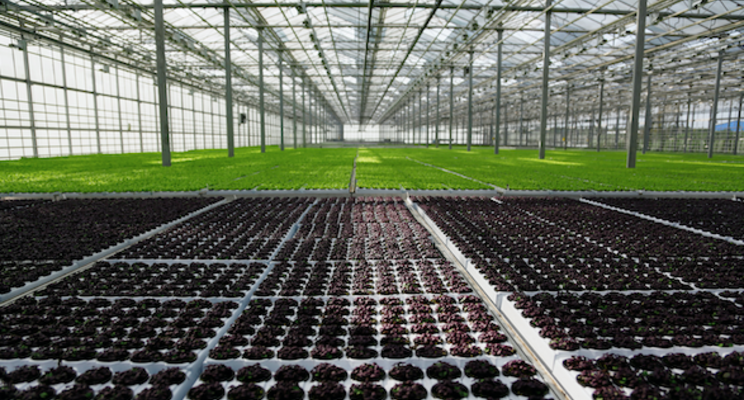Maximizing success with foliar sprays
Added on 16 December 2021

The most common method of applying plant growth regulators (PGRs) is using foliar sprays. There are several reasons why sprays are the most popular application method. First, sprays are already familiar to many of us since a majority of insecticides and herbicides are applied as foliar sprays. In addition to being a familiar application method, foliar sprays are also popular because all the PGRs on the market are absorbed by shoots (leaves and/or stems). Finally, for post-transplant growth control during finishing, foliar sprays can be more time-efficient when compared to drenches. To make sure you get the most out of your PGR sprays, this article will review some important best management practices to remember.
Mixing it up
Like every other type of PGR application, proper measuring prior to mixing will help avoid problems, such as insufficient or excessive growth control from mixing errors.
Start with the highest quality water available, one with low alkalinity and a lower pH. The alkalinity in water can reduce the effectiveness of PGRs, as can a high pH for some. Starting out with high-quality water is the first step in maximizing effectiveness. Beyond mixing the right amount of active ingredient at the right time, consider enhancing your formulation. If permissible, as indicated on the PGR label, add a non-ionic surfactant or "spreader-sticker" to improve the efficacy of your foliar sprays. The strong surface tension of water causes drops or beads to form on foliage. By adding a surfactant, the surface tension of the water is broken and instead of drops, a more even film will form on the leaf, increasing contact between the leaf and the PGR solution, thus promoting increased uptake.
Also, be mindful of the time that will lapse between mixing PGRs and applying them. Some PGRs (such as ethephon) can lose activity if they sit in a tank too long,
Application volumes
One of the most important aspects of foliar spray applications is the volume of solution applied to plants. A common recommendation for PGRs has been to "spray to runoff", where solution is sprayed until it is running off leaves. The main problem with this approach is that it is very subjective. "Runoff" will look different to different people. A great illustration of this is an activity I have done before with people. I ask a group of different people to go apply foliar sprays to the point of runoff on crops. The amount of water or "solution" that is sprayed is calculated afterwards and, along with square footage of the area sprayed, we have calculated the volume of solution applied by each individual on a square foot basis. Results have ranged widely, from less than 1 quart per 100 ft2 to over 4 quarts per 100 ft2.
Click here to read more.
Photo created by wayhomestudio - www.freepik.com
Source: Greenhouse Management
More news















